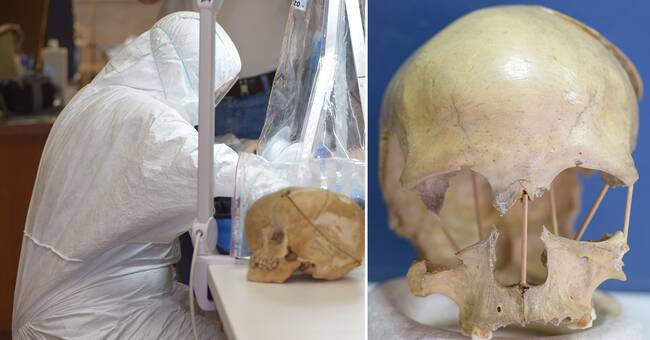She is called Peştera Muierii 1 after the Romanian cave she lived in 35,000 years ago.
Now, evolutionary geneticists Mattias Jakobsson and Emma Svensson at Uppsala University have succeeded in mapping her entire genome, ie the genome.
- We took a sample from one of her teeth that was stuck in the skull.
It was so well preserved that we could get her whole genome out.
There are only a handful of individuals from this time that they have managed to do that with, says Mattias Jakobsson.
Was probably healthy
The analysis of the genome can tell that she had a predisposition for both dark skin and hair as well as dark eyes.
Her genes reveal that she did not suffer from any hereditary diseases that we know of.
She also had almost as little kinship with Neanderthal speakers as we have today.
But what surprised the evolutionary geneticists was that she had a much higher so-called genetic variation than previously thought humans had at this time.
The results were published this week in the journal Current Biology.
The bottleneck hypothesis
People outside Africa today have a lesser degree of genetic variation than those living in Africa.
But know that modern man evolved in Africa perhaps 300,000 years ago.
Then a small group migrates out of Africa about 80,000 years ago - and it is the group that has since spread around the world outside Africa.
It has been assumed that so few individuals migrated out that a lot of genetic variants disappeared.
It would have been a bottleneck - and the genetic variation of the emigrants has been assumed to be much lower than that of those who remained in Africa.
The challenger
Now the woman from Peştera Muierii is challenging the bottleneck hypothesis.
- She lived almost 35,000 years ago and she has a great genetic variation, so it could not have been a bottleneck 80,000 years ago that caused the reduction of genetic variation, says Mattias Jakobsson.
Instead, something else happened.
The descendants of the woman in Peştera Muierii met in difficult times.
It got significantly colder.
20,000 years ago it was the ice age maximum and the ice sheet retreated a bit into today's Germany and it probably got really colder all over the globe.
It caused the genetic variation in the people who lived then to drop sharply.
Stiff during the ice age
- The reduced genetic variation is linked to the changed life situation during the ice age.
During that time, there were few places in Europe for people to live in, and there were perhaps only 1,000 - 10,000 individuals at a time, says Mattias Jakobsson.
And with so few individuals, the genetic variation drops sharply, which increases the risk of genetic diseases and in its most extreme form, it becomes inbreeding.
The descendants migrate in
When it got warmer again and the ice cover withdrew, a small part of the descendants of the woman from Peştera Muieriis wander up to Scandinavia and become what we call the first Swedes.
That's about 10,000 years ago.
And the warmer it got, the more waves of migration spread across Europe, which increased genetic variation.
A few thousand years later, a completely new group of people from the areas around present-day Turkey comes with a completely new way of life - as farmers.
Today's Europeans are therefore not directly descended from the woman from Peştera Muierii, but we are cousins in the family tree of human evolution.

